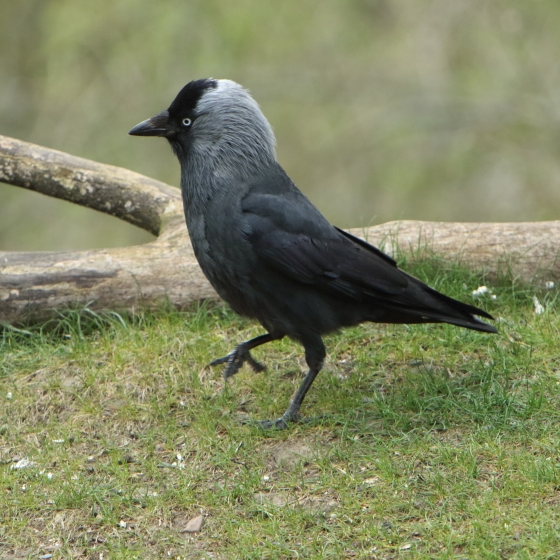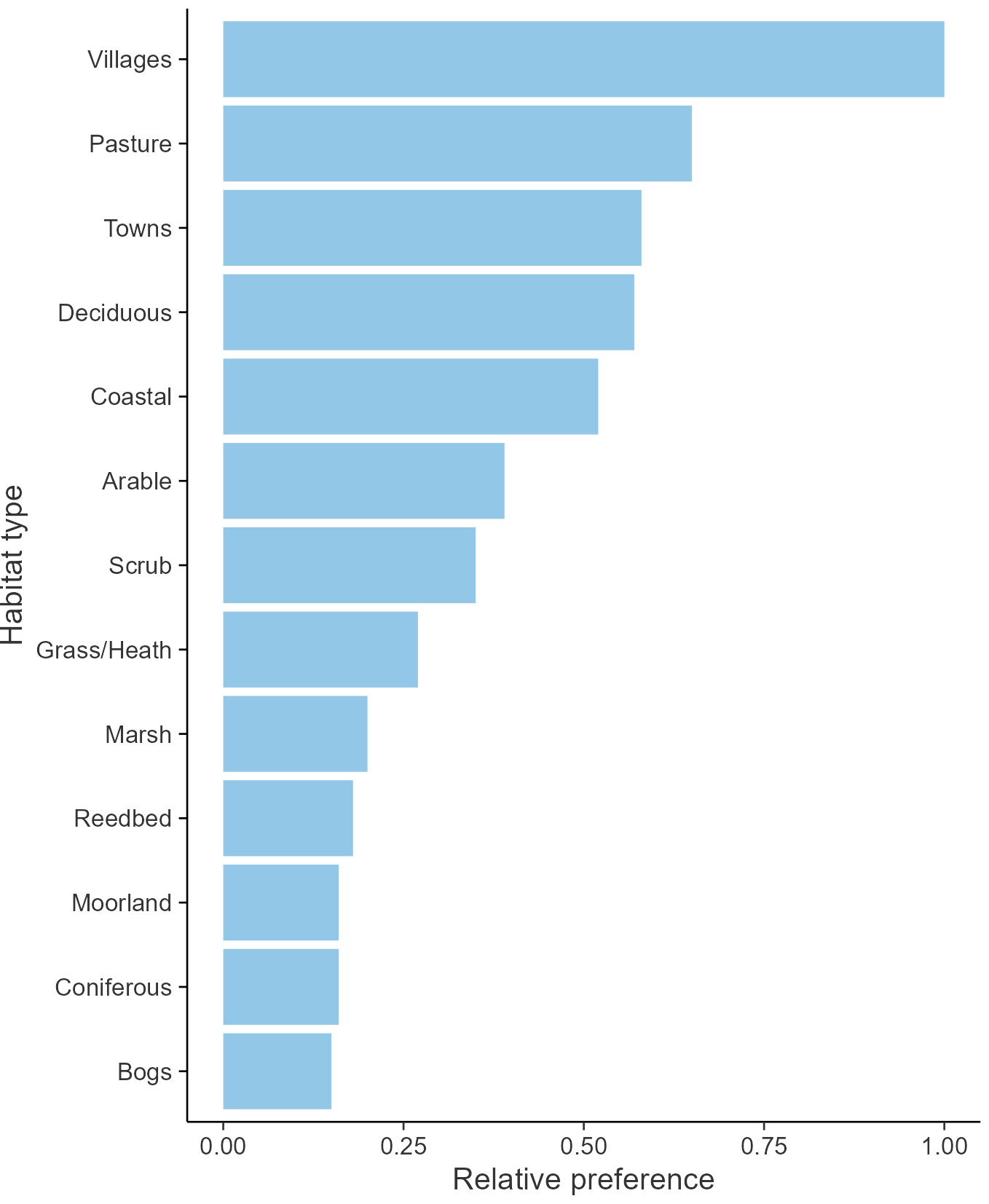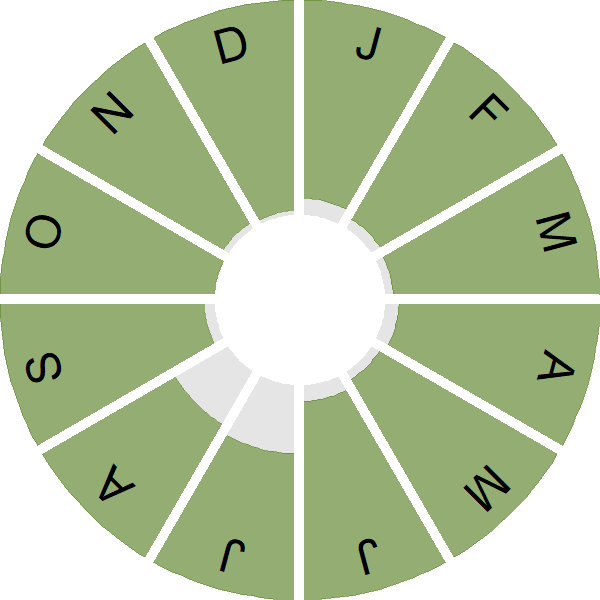Jackdaw

Introduction
Large Jackdaw flocks, with their characteristic 'chack-chack' calls, can be an impressive sight when coming to roost on winter evenings.
The Jackdaw is a smart looking bird with black plumage, and a contrasting light grey nape. The eye is a piercing silver yellow in adults, but a stunning blue in young birds. This omnivorous species prefers open countryside in which to forage for food, but will nest in towns to take advantage of the warmth and cavities of chimneys.
A resident species, the number of Jackdaws breeding in the UK has increased sharply since the 1960s, although this trend is more stable in Wales and Northern Ireland. Numbers in winter are supplemented by birds visiting from northern Europe.
- Our Trends Explorer gives you the latest insight into how this species' population is changing.

Key Stats
Identification
ID Videos
This section features BTO training videos headlining this species, or featuring it as a potential confusion species.
Corvids
GBW: Jackdaw and Carrion Crow
Songs and Calls
Call:
Alarm call:
Begging call:
Status and Trends
Conservation Status
Population Change
Jackdaws have increased in abundance since the 1960s (Gregory & Marchant 1996). The BBS map of change in relative density between 1994-96 and 2007-09 indicates that increase over that period was fairly uniform across the UK range, but with some minor decrease in eastern Scotland, and more recent BBS data suggest that the increase is continuing in all UK countries apart from Wales where the BBS trend is stable. Numbers across Europe have been broadly stable since 1980 (PECBMS: PECBMS 2020a>).
Distribution
Jackdaws are widespread in both seasons and absent only from large areas of northwest Scotland and parts of northwest Ireland.
Occupied 10-km squares in UK
or view it on Bird Atlas Mapstore.
or view it on Bird Atlas Mapstore.
European Distribution Map
Distribution Change
There has been little overall change in breeding distribution but there has been a mixture of gains and losses at the edge of the winter range in Scotland, and to a lesser extent in Ireland.
Change in occupied 10-km squares in the UK
or view it on Bird Atlas Mapstore.
or view it on Bird Atlas Mapstore.
Seasonality
Jackdaw is recorded throughout the year on up to 50% of complete lists.
Weekly pattern of occurrence
The graph shows when the species is present in the UK, with taller bars indicating a higher likelihood of encountering the species in appropriate regions and habitats.

Habitats
Breeding season habitats
Relative frequency by habitat
The graph shows the habitats occupied in the breeding season, with the most utilised habitats shown at the top. Bars of similar size indicate the species is equally likely to be recorded in those habitats.

Movement
Britain & Ireland movement
Foreign locations of birds ringed or recovered in Britain & Ireland
Dots show the foreign destinations of birds ringed in Britain & Ireland, and the origins of birds ringed overseas that were subsequently recaptured, resighted or found dead in Britain & Ireland. Dot colours indicate the time of year that the species was present at the location.
- Winter (Nov-Feb)
- Spring (Mar-Apr)
- Summer (May-Jul)
- Autumn (Aug-Oct)

European movements
EuroBirdPortal uses birdwatcher's records, such as those logged in BirdTrack to map the flows of birds as they arrive and depart Europe. See maps for this species here.
The Eurasian-African Migration Atlas shows movements of individual birds ringed or recovered in Europe. See maps for this species here.
Biology
Productivity and Nesting
Nesting timing
Egg measurements
Clutch Size
Incubation
Fledging
Survival and Longevity
Survival is shown as the proportion of birds surviving from one year to the next and is derived from bird ringing data. It can also be used to estimate how long birds typically live.
View number ringed each year in the Online Ringing Report.
lifespan
Survival of adults
Survival of juveniles
Biometrics
Wing length and body weights are from live birds (source).
Wing length
Body weight
Ring Size
Classification, names and codes
Classification and Codes
- Order: Passeriformes
- Family: Corvidae
- Scientific name: Coloeus monedula
- Authority: Linnaeus, 1758
- BTO 2-letter code: JD
- BTO 5-letter code: JACKD
- Euring code number: 15600
Alternate species names
- Catalan: gralla occidental
- Czech: kavka obecná
- Danish: Allike
- Dutch: Kauw
- Estonian: hakk
- Finnish: naakka
- French: Choucas des tours
- Gaelic: Cathag
- German: Dohle
- Hungarian: csóka
- Icelandic: Dvergkráka
- Irish: Cág
- Italian: Taccola
- Latvian: kovarnis, kakis
- Lithuanian: eurazine kuosa
- Norwegian: Kaie
- Polish: kawka (zwyczajna)
- Portuguese: gralha-de-nuca-cinzenta
- Slovak: kavka tmavá
- Slovenian: kavka
- Spanish: Grajilla occidental
- Swedish: kaja
- Welsh: Jac-y-do
Research
Causes of Change and Solutions
Causes of change
There is no evidence available regarding the ecological causes of increase for this species but changes have been associated with improvements in breeding performance, probably due to increased food availability.
Further information on causes of change
As with Magpie, Rook and Carrion Crow, the increase has been associated with improvements in breeding performance and probably reflects the species' generalist feeding habits, which allow it to exploit diverse and ephemeral food resources, although direct evidence for this is limited. There have been substantial declines in nest failure rates during the egg and chick stages, and the number of fledglings per breeding attempt has improved. Laying dates have advanced by a week. The 2007-11 Atlas abundance maps (Balmer et al. 2013) show lower abundance for Jackdaw in very urban areas such as Greater London, unlike Magpie and Carrion Crow. Their ability to spread into more urban habitats may be limited by poorer food resources in these areas which lead to low breeding productivity (Meyrier et al. 2017).
Typically in this species, the younger chicks of a brood perish quickly if food becomes limited. Henderson & Hart (1993) provided evidence that increases in fledging success are likely to be due to improved provisioning by the parents. Most of the variation in annual reproductive output was caused by nestling mortality rather than clutch size or hatching success. Soler & Soler (1996) used data from Spain to show that additional food advanced the laying date, increased the clutch size, independently of laying date, and increased fledging success.
Changes in the landscape may have also benefited this species. Gregory & Marchant (1996) found an increase in Jackdaw numbers in agricultural habitats, particularly in the south-west, but an overall decrease in forests. These increases were associated with trends in cultivation and population gains have been most pronounced on grazing farms and in the north and south-west where such farms predominate. A similar pattern was found in Sweden by Andren (1992), who provided evidence that the density of Jackdaws increased as forest became fragmented and intermixed with agricultural land.
Information about conservation actions
Like most other crow species (with the exception of Rook), the Jackdaw is currently increasing in the UK, hence it is not a species of concern and no conservation actions are currently required.

